During the China-US trade war, Chinese companies were concentrated in a chokehold in the chip field. This time, Tangxun Information Academy has launched a series of articles analyzing companies in the chip industry for discussion and learning.
The British company ARM is a global leader in semiconductor intellectual property (IP) provision. More than 95% of smartphones and tablets worldwide use ARM architecture. ARM has designed a large number of cost-effective, low-power RISC processors, related technologies, and software. In 2014, the global shipment based on ARM technology reached 12 billion units, and since its inception, there have been 60 billion chips based on ARM technology. The technology features high performance, low cost, and energy efficiency. It holds a dominant position in processors for smartphones, tablets, embedded control, and multimedia digital applications.
The first attention was drawn on January 6, 2011, when Microsoft announced that the next version of Windows would officially support ARM processors.
This was a significant event in the history of computer industry development, marking the shake-up of the dominant position of x86 processors. Currently, in the mobile device market, ARM processors hold more than 90% market share; in the server market, a 2.5GHz server was launched in 2011; in the desktop computer market, Microsoft’s support has now emerged. Since then, ARM has become mainstream and competes with Intel!
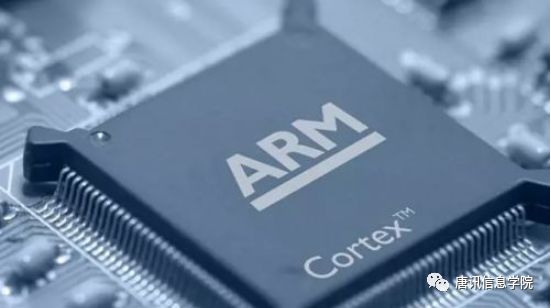
Compared to the tumultuous changes, ARM, the protagonist, has not received much attention and seems rather inconspicuous. How did this British company, located far from Silicon Valley in Cambridge, come to today, managing to bring down chip giant Intel?

Lee Smith, a veteran of ARM, wrote a PPT introducing the development history of the company.
On December 5, 1978, physicist Hermann Hauser and engineer Chris Curry founded the CPU company (Cambridge Processing Unit) in Cambridge, UK, primarily supplying electronic devices to the local market.

In 1979, the CPU company was renamed Acorn Computer Company.

Initially, Acorn planned to use Motorola’s 16-bit chip but found it too slow and expensive. “A machine priced at £500 cannot use a CPU costing £100!” They turned to Intel for the design of the 80286 chip but were refused, forcing them to develop it themselves. (Will Intel regret this decision immensely?)
In 1985, Roger Wilson and Steve Furber designed their first-generation 32-bit, 6MHz processor and created a computer based on the RISC instruction set, abbreviated as ARM (Acorn RISC Machine). This is where the name ARM comes from.

RISC stands for “Reduced Instruction Set Computer,” which supports relatively simple instructions, leading to low power consumption and low cost, making it particularly suitable for mobile devices. A typical early device using ARM chips was Apple’s Newton PDA.

On November 27, 1990, Acorn officially restructured into ARM Computer Company. Apple invested £1.5 million, chip manufacturer VLSI invested £250,000, and Acorn itself contributed £1.5 million in intellectual property and 12 engineers. The company’s office was very rudimentary, just a barn.
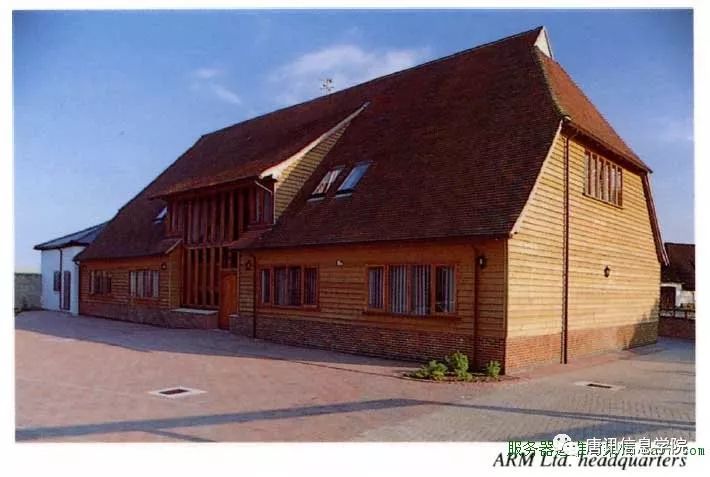
This is a scene from a meeting held in the barn.

After the company was established, business was initially poor, and engineers were anxious about potential layoffs. Due to a lack of funding, ARM made a far-reaching decision: it would not manufacture chips itself but would license chip design plans to other companies for them to produce. This model ultimately led to ARM chips flourishing everywhere, placing the closed design of Intel into the vast sea of ‘people’s war.’
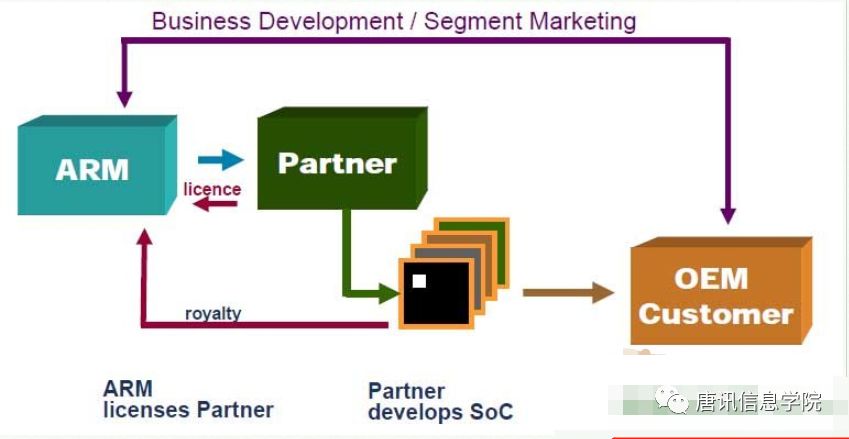
In the 1990s, ARM’s performance was mediocre, and processor shipments stagnated. However, entering the 21st century, due to the rapid development of mobile phones, shipments exploded, and ARM processors took over the global mobile phone market. In 2006, global ARM chip shipments reached 2 billion units, and by 2010, it reached 4.5 billion units.
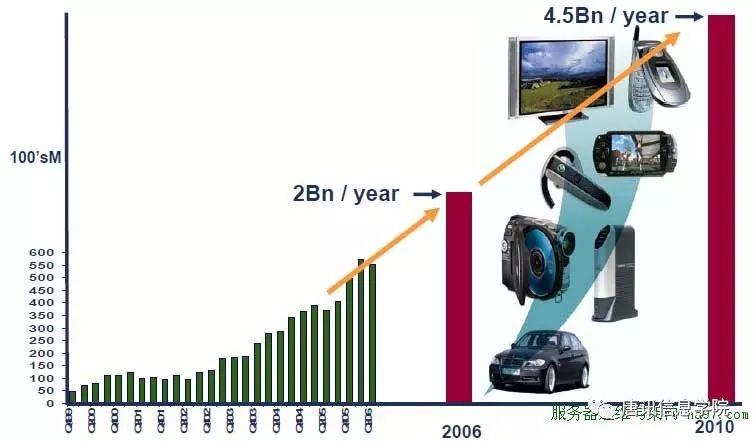
By the end of 2007, ARM had a total of 1,728 employees, held 700 patents (with another 900 pending approval), had 31 global branches, 200 partners, and an annual revenue of £260 million.
The following image shows a company gathering in 2004.

Looking ahead, even if Intel successfully implements the Atom strategy to significantly reduce the power consumption and cost of x86 chips, it will still face great difficulty competing with ARM. This is because ARM’s business model is open, and any manufacturer can purchase a license. Therefore, the future is not Intel vs. ARM, but Intel vs. all other semiconductor companies in the world.
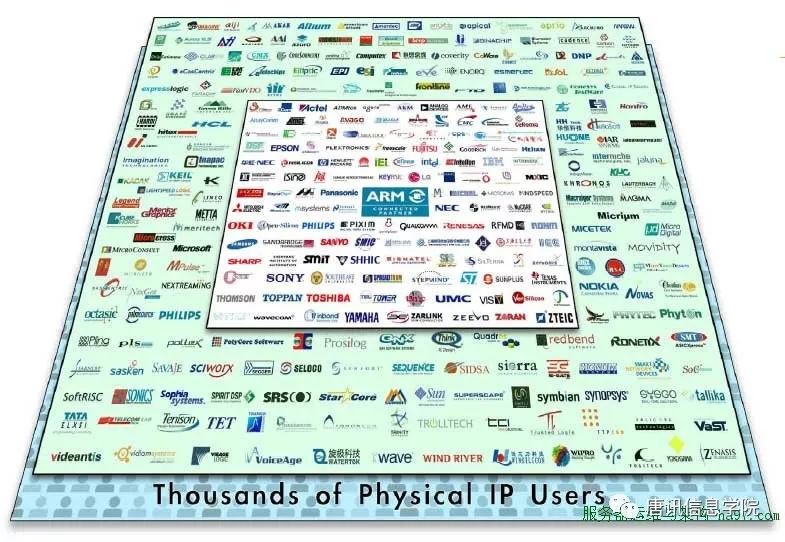
Next, let’s introduce ARM’s processors:
1. The Origin of ARM Processors
ARM was not founded like a typical startup, where a few friends make a decision to start a revolution. The ARM processor was initially incubated as a project by its parent company, Acorn Computers (hereinafter referred to as Acorn).
What kind of company is Acorn? Founded in 1978, Acorn primarily operated in the personal computer sector and was a well-known company in the UK. As early as the early 1980s, Acorn initiated a series of projects that were the predecessors of ARM (coincidentally, this project was also called ARM, which stands for Acorn RISC Machine). At that time, the BBC was undertaking a grand project to popularize computers. To promote this project, the BBC needed a computer that could support its main content. During the initial phase of the project, the BBC sought bids from multiple manufacturers, with Acorn being one of them.
However, Acorn had only one week to write the proposal and create a demo. Steve Furber and Sophie Wilson, two brilliant minds, worked through the night for a week based on the existing Proton prototype to submit a usable demo to the BBC. The experiences of geniuses are often astonishingly similar. Proton completely outperformed its competitors during this bidding process and won the BBC project, leading to the world-famous BBC Micro. While Acorn achieved this major project for the BBC, the BBC’s support also brought Acorn into the limelight.
As time went on, Sophie and others gradually became dissatisfied with the limitations and performance of the BBC Micro, leading to the idea of designing the next generation of products: developing a low-power, low-cost processor based on a 32-bit RISC instruction set while retaining the essence of the 6502. In 1983, Acorn’s core team completed the design and simulation of the first version of the ARM instruction set on the BBC Micro, and in 1985, with the help of VLSI, it successfully produced the chip, named Acorn RISC Machine, abbreviated as ARM. The first-generation ARM chip was primarily to validate the team’s ideas and was not formally put into production.
-
ARM2
With the design and production experience of ARM1, Acorn’s team began to enhance the architecture and instruction set comprehensively. Just a year later, ARM2 was launched. Compared to the research-oriented nature of ARM1, ARM2 can be seen as the commercial replica of ARM1. Improved technology, enhanced instruction set, and higher clock frequency made ARM2 the first truly commercial ARM chip (hence many documents record ARM2 as the first generation ARM chip). Although it lagged behind the performance of Intel 80386, it had already surpassed Intel 80286 in performance.
-
ARM3 & ARM Ltd,
As ARM continued to update its chips, the Archimedes computers equipped with ARM chips were released, attracting increasing attention to the RISC field. In 1989, ARM3 was launched, focusing on performance enhancement. With a 4K cache and a peak frequency of 25M, ARM chips’ performance was further improved. In the same year, Apple, Acorn, and VLSI Technology reached a secret agreement, with Apple directly participating in the development of the new ARM chip and independently establishing a new company from Acorn’s ARM development team. In November 1990, Advanced RISC Machines Ltd., commonly known as ARM, was born. From this point on, ARM officially separated from Acorn, and all subsequent ARM series chips were designed and developed by ARM. It was also from its inception that ARM established a different business model from Acorn—IP licensing. In simple terms, ARM does not produce chips; instead, it opens up chip designs through IP and architecture licensing to partners (initial licensing + royalty on shipments).
-
ARM6
In 1992, the chip developed in collaboration with Apple and the ARM team was officially released, codenamed ARM6 (ARM4 and ARM5 were skipped for certain reasons). This chip was the first product of ARM and was highly anticipated by both parties. Apple even embedded this chip in its flagship product, the Apple Newton PDA. There’s a saying, “born at the wrong time?” The official reason is that the product was too advanced, and the technology could not support its functions; meanwhile, its high price limited its sales. The more common view is that its handwriting recognition rate was low, and numerous bugs could not be resolved in time. The Apple Newton is considered a failed series in Apple’s historical product lineup. After Steve Jobs returned to Apple in 1998, he decisively cut this project, but that’s another story. Moreover, due to Apple’s financial struggles at the time, after ARM went public, Jobs sold Apple’s shares in ARM, which is indeed quite heartbreaking when you think about it.
As the first product of ARM, ARM6 is destined to have a significant historical mark. However, due to its age and far lower shipment volume compared to its younger sibling ARM7, people’s impressions of it largely remain on being the first “real ARM.”
5. ARM7 & ARM9
In 1993, ARM7 was released. In 1998, ARM9 was released. In 1998, ARM went public. In 1998, Apple sold all its ARM shares (why do you keep an eye on ARM’s stocks?). If ARM7 and ARM9 do not deserve to be the stars of the ARM family, then others are even less qualified. While their performance cannot compare to today’s Cortex A series, their historical status absolutely remains unparalleled. Why? In the 1990s, it is estimated that 90% of people learned about ARM through these two series:
-
Over 100 million units sold
-
Laid the foundation for the contemporary ARM architecture
During the 1990s, ARM completed its leap, officially entering the mainstream embedded SoC market and becoming a “giant” in this field. The foundation for this was laid by the ARM7 and ARM9 chips. From consumer electronics to automotive, from sensors to medical devices, ARM7 officially entered all aspects of people’s lives, while ARM9 further showcased ARM’s potential and powerful computing capabilities. For companies developing products, introducing the Thumb instruction set greatly improved code density, effectively reducing ROM costs. Additionally, the ARM7 generation introduced JTAG-based ICE online debugging, a feature highly favored by programmers, and those who have used it know its effectiveness! ARM9 also advanced from the von Neumann architecture to the Harvard architecture, establishing the foundational tone for subsequent ARM processors. The ARM7 chips of this era could run at clock frequencies of over 100M, while ARM9 could achieve computational capabilities of up to 400M. It is precisely because of such performance that they could adapt to various application scenarios. I vaguely remember that I also started working with embedded systems from ARM7, and those days developing speech recognition systems based on ARM7 would have been impossible without the corresponding computing power. Back then, the young embedded boys, who didn’t know S3C44B0 and S3C2410?
From ARM7 onwards, common SoC models often had some strange suffixes, which actually represent some features supported by the chip: T: supports both ARM (32-bit) and Thumb (16-bit) instruction sets D: Contains Debug extensions M: Enhanced (relative to earlier ARM cores) 32×8 Multiplier block I: Embedded ICE macrocell S: synthesizable (i.e., distributed as RTL rather than a hardened layout) J: Jazelle DBX (Direct Bytecode eXecution) These traditions have continued with later ARM11 and ARM Cortex A. For these later ARM chips, ARM7 & 9 can probably only say, “everyone here is just a younger brother.”
6. ARM11
ARM11 was released in 2002. In this generation of processors, ARM further enhanced the instruction set, releasing the ARMv6 instruction set. At the same time, this was the last generation of ARM’s